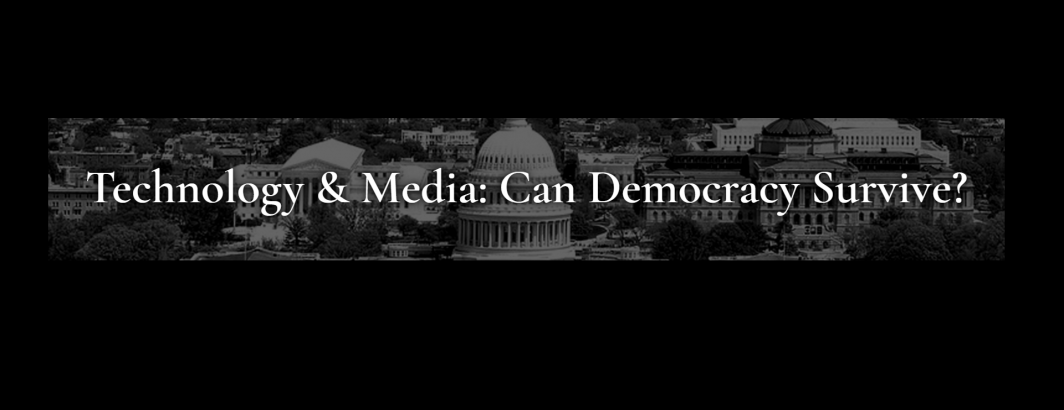
RealClearPublicAffairs has launched a new page featuring Kalev's work:
Kalev Hannes Leetaru explores how the intersection of technology, traditional journalism, and social media are changing the foundations of modern society in ways that both strengthen and threaten the foundations of democracy.
These ways include: the increasingly blurred lines between mainstream and social media, professional and citizen journalists; the erosion of free speech as the public square is privatized by social media companies, while the vibrant free exchange of ideas that empowers democracy is replaced by an ever-narrowing concept of “acceptable speech” as defined by Silicon Valley; the centralization and coastal urbanization of both mainstream and social media and the resulting consolidation of narratives and loss of diverse local perspectives; the entrenchment of unaccountable fact-checkers with power to determine what is regarded as true and what is prohibited as falsehood; the rise of “stealth editing,” allowing news outlets to banish their mistakes to the digital memory hole; and the accelerating impact of AI on content moderation.
Most of us understand that these trends are changing our societal landscape, yet we understand too little about their transformative impact on democratic societies.
RealClearPublicAffairs’ Technology & Media: Can Democracy Survive is designed to explore these fundamental questions through critical assessments and pioneering new forms of data journalism that rely on hard numbers and deep analysis rather than anecdotes and opinion pieces. Powerful data-driven visualizations for a visual-oriented modern world are coupled with cutting-edge data analyses to sift out the often-counterintuitive reality of today’s technology and media landscapes and offer clues as to where we are heading.
Four key themes drive this discussion:
Modeling the Media Landscape. How might data-driven quantitative assessment of the media landscape help the public, policymakers, and journalists themselves better understand the lens through which they view the world?
Data-driven analyses explore how the media are covering today’s most pressing issues, from highlighting stark differences in framing, narration and agenda-setting, to uncovering hidden trends. Such insights make it possible to examine big-picture questions like the structure of the global media ecosystem and how it affects the flow of ideas and narratives.
From global-scale network analyses of how the linguistic and emotional framing of stories affect their media coverage to examinations of trends in how the media talk about key societal issues, these explorations use data to shed light on the lens through which the public sees the world.
Quantifying The Fact–Checking Landscape. From their origins as urban myth debunkers, fact-checking sites have begun to wield unprecedented power over the modern digital landscape, deciding what constitutes truth and falsehood.
Little is known about the internal operations of these sites, from their rater guidelines to how they evaluate claims. Only by shining light onto the opaque world of these ultimate arbitrators of reality can we help the public, press, and policymakers understand the subjective reality of fact-checking that lies beneath its scientific veneer.
Broadening Public Understanding of Social Platform Influence. Social media platforms wield extraordinary power over public discourse, deciding what we see and say and even what constitutes acceptable speech.
Yet the public and even policymakers themselves have little understanding of how the policies and decisions of social platforms are affecting the public square and the free exchange of ideas that underpins democracy.
Exploring New Approaches To Understanding The Global Agenda. Finally, how might datasets that have not historically been used to understand the global narrative lend new insight into how media shape our understanding of the world?
The limited airtime of broadcast television forces its editorial decisions to the forefront, making it one of the most valuable mediums through which to compare disparate media agendas; the digital correlate to such editorial oversight is the news homepage, on which only a small fraction of the myriad articles published are linked over the course of each day.
Reconstructing these editorial choices offers insights into the editorial decision-making process of news in the digital era and the degree to which media outlets, in the click-first environs of today, favor stories that stoke societal divisions over those that bring people together or create an informed citizenry.
Similarly, digital news emphasizes ephemerality: an article can be rewritten in real-time as new information arrives, disputed facts are resolved, or editorial considerations require changing the tone. Articles may be rewritten beyond recognition or simply deleted.
How can new forms of media data, from television and news archives to new methodologies like AI, help us see the news in new ways?